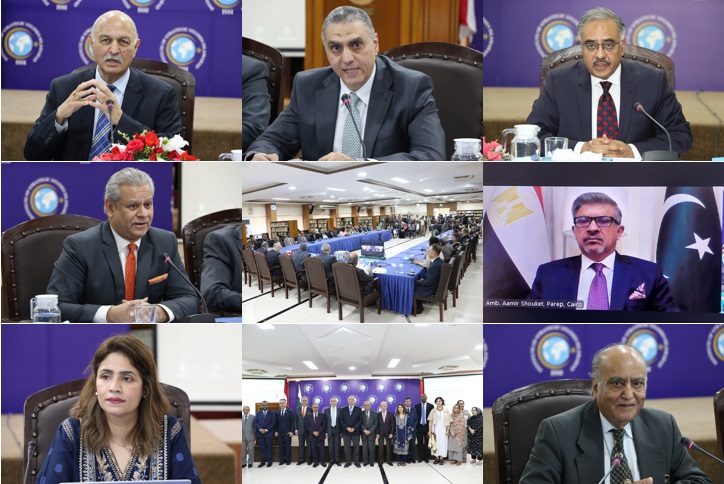Ambassador Jemal Beker Abdula
Ethiopia has a vast tourism potential due to its natural, cultural, religious, historical and archeological gifts. Ethiopia is often dubbed in the international community as the “Cradle of Humankind” due to its prominent position and important role in studying human evolution and human beginning on earth. Several pieces of evidence prove the country’s valuable contribution to understanding early human history and pre-history under different phases. The country’s rich archaeological heritage can be measured on various lines, like the discovery of Lucy in 1974 at the Hadar site. The Lucy title is given to the Australopithecus collection of several pieces of centuries-old fossilized bones discovered in the Awash Valley of Ethiopia. The Lucy skeleton has been marked internationally as one of the most completed early hominid discoveries to understand the origin of human evolution. Akin to Lucy, the Ardi (Ardipithecusramidus), Homo Erectus, and Homo Habilis provide further validation to the considerable contribution of Ethiopia in the history of mankind. In addition to Hadar, Afra Depression and Melka Kunture and Balchit are known globally as important areas enriched with fossil deposits, and they offer a greater deal to people interested in visiting archeological and Paleoanthropological sites. The country’s unique position in the region has made it an epicentre of early human civilizations, providing a wide range of ancient sites and fascinating international visitors concerning archaeology studies. The country’s archaeological tourism contains profound insights into human history, which offers immense opportunities to explore the depths of human origin and its evolution on Ethiopian land.
Furthermore, religion always remained an important aspect of Addis Ababa’s cultural and historical heritage, where the local population has a centuries-old history of diverse religious practices. The varying indigenous religious practices across the country have highlighted Addis Ababa internationally as one of the prominent lands of pilgrims and an interesting place where visitors can learn about the history of religions and their transcontinental spread. Ethiopia’s deep-rooted association with ancient religions has made it a historical center of ancient Christian and Islamic values without upsetting the positions of other sacred ideologies in society. The famous town of the Lalibela, has 11 rock-cut monolithic churches, which have been established in contrast to the early monolithic churches of the country. The presence of spiritual Christian sites introduced innovative architecture in the historical buildings, and these buildings attract thousands of pilgrims and visitors annually. Regarding Islamic history, HararJugol-the, the old walled city, is one of the ancient places of the Muslim world, and presently, it is internationally famous for its ancient mosques and rich Islamic knowledge. The city’s unique architecture is globally known forits Harar Walls, which presents a brief overview of Islamic culture and ancient Muslim traditions. This walled city is well-known for its distinctive interior designs, including 82 mosques and 102 shrines, largely contributing to Ethiopia’s national cultural heritage. Moreover, Sof Omar natural and cultural heritage is another fascinating religious and cultural sites of Ethiopia. As a sacred place of worship Sof Omar cave system is believed to be the Caves of Mystery where the ancestral cult of Sheik Sof Omar Ahmad, his families and descendants is observed and practiced annually. Each and every cave structures are assigned and designated to diverse ritual practices. Annual festive events with comprehensive Islamic religious processions and traditional beliefs and practices are conducted in the cave shrines and mosques of this underground karstic limestone caverns
Both cities of Ethiopia, Lalibela and Harar, and Sof Omar Cave are on the UNESCO World Heritage List due to their rich cultural and religious heritages and sacred associations with the Christian and Muslim communities.
UNESCO has added many Ethiopian sites to its World Heritage List, such as the ancient cities of Aksum and Tiya (famous for their massive obelisks (stelae) and tombs), and Awash Valley (due to the discovery of Lucy), the Lower Valley of the Omo (having a wealth of fossils), and Konso cultural landscape (due to anthropomorphic wooden statues). UNESCO has formally recognized two national parks in Ethiopia as potential places for its World Heritage List: the Simien Mountains National Park and the Bale Mountains National Park. The Simien Mountains Park is the largest national park in the country, and its territory covers the two highest points of Ethiopia, Simien Mountain and Ras Dashan. The Bale Mountains National Park is famous for its diverse Afromontane habitats and striking landscapes, whereas other national parks contain varying exceptional features. In addition to having a wide range of wildlife and biodiversity, the Semi-arid landscapes of Awash National Park, the white grass of NechSar National Park, the Mursi and Nyangatom tribes of Omo National Park, Nile River Basin ecosystem of Gambella National Park, and the savannah landscapes of Mago National Park are the mainstream points of Ethiopian tourism. These parks reflect the country’s diverse ecosystems, critical for protecting Ethiopian natural culture, attractive landscapes, and rich biodiversity. Moreover, the semi-desert ecosystem of Yangudi Rassa National Park, the twin lakes of Abijatta-Shalla Lakes National Park, the South Sudanese-Nile ecosystem of Gambella National Park, and the dense forests and magnificent river flows of the Chebera Churchura National Park contain interesting tourist offerings. The various attractive points of these parks enabled Ethiopia to attract many visitors from diverse backgrounds. These national parks’ unique cultural and ecological offerings have enabled the Ethiopian nation to commendably support the broader context of African tourism in the world.
It is pertinent to mention here the highest points of Northeastern Africa, the Ethiopian highlands, and sometimes they are called the Roof of Africa. This is due to the country’s high elevation and distinctive mountainous terrain. The country has some of the internationally known highest peaks of the continent, and these peaks give the Ethiopian nation a towering position in the continent parallel to making it an inimitable home of deep valleys, rugged mountains, and extensive plateaus. The Roof of Africa sometimes recalls Addis Ababa’s historical resilience and independence efforts, contrasting other African nations colonized by several external powers. In this way, Roof of Africa enhances the scope of Ethiopian tourism in the world while containing adequate fascination for travellers interested in trekking, mountain climbing, and witnessing the unmatchable natural stunning landscapes. In addition to the country’s topology, the Ethiopian cultural diversity is internationally recognized as an essential feature of its tourism potential. This diversity is based on different ethnic groups’ languages, traditions, norms, and cultural practices. The Omo Valley is famous in the region for its dissimilar cultural practices consisting of different Indigenous tribes such as Mursi, Hamer, Kara, Nyamatong, Kuegu, Arbore, Ari, Daasanach, and Turkana.These diverse social patterns of Ethiopia formulate a unique music comprised of characteristic pentatonic scale and exceptional traditional dances of more than 80 domestic ethnic groups have their own peculiar musical pattern and melodies. The exciting part of Ethiopian music is associated with its unique instruments. These instruments create different tunes of Christian Zema and Muslim Sufi music, along with folk and popular melodies. In this way, music represents a vibrant component of the country’s cultural identity, which the Ethiopian nation has recognized as a primary source of pride. International tourist communities could consider it a gateway to understanding and enjoying Ethiopian culture, whereas travellers from diverse countries can enjoy the exciting music scenes in Addis Ababa. International travellers can enjoy a mixture of traditional music and contemporary pop under the interesting tunes of Ethio-Jazz in various live public music avenues. Besides social and cultural music events, religious festivals like Timkat and Meskel annually receive many visitors from different countries to experience Ethiopian spiritual music which are UNESCO intangible World Heritages. Moreover, the Harari People Shuwalid Festival attracting a huge Muslim community that also registered as Intangible World Heritages. Thus, there is no harm in saying that the music has become essential to Ethiopian tourism while offering a matchless blend of classical and modern beats.
The discussion on Ethiopian tourism can only be completed by mentioning the role of local cuisine, which is an integral part of national cultural identity, in attracting international visitors. The growing tourist attraction for Ethiopian taste is due to its exclusive flavours, distinctive dining manners, traditional cooking styles, and rich culinary traditions. The gluten-free Injera, spiced clarified Niter Kibbeh, chilli-based Berbere, Mitmita, muqmad, chuko, qocho represent different local ingredients’ tastes and potentially attract visitors from different countries. The communal dining styles support a sense of togetherness, and breaking Injera together contains cultural significance more than eating. Such cultural norms foster the values of hospitality, friendship, and community thinking, which enable international travellers to enjoy the memorable cuisine culture of Ethiopia. Coffee is a gravitational point of Ethiopian cuisine because the country is the birthplace of coffee, and it has been socially associated with various formal ceremonies and cultural events. The roistering, grinding, and brewing of coffee beans also encompass fascinating Ethiopian heritage, whereas the tourist communities could visit the coffee forms of Harar, Jimma, Limu, Yirgacheffe and Sidamo, providing practical experiences of coffee cultivation and its further processing. Moreover, the country’s coffee tours involve fascinating and immersive experiences, letting travellers gain exciting facts about the Ethiopian coffee industry and its global reputation.
Therefore, the country has several tourist offerings and compelling destinations for visitors. The abovementioned information provides a glimpse of Ethiopian potential in the international tourist industry parallel to securing a prominent position in regional tourist reviews. Under the leadership of Prime MinisterAbiy Ahmed, the country’s present government is highly determined to boost Ethiopian tourist potential by upgrading the country’s tourist infrastructure like Wanchi ecotourism, Chebra Churcura elephant loge, and Gorgora and promoting the indigenous tourism industry. The central vision of Abiy Ahmed’s government concentrates on cultural preservation, sustainable practices, digital transformation, and diversification in the national tourism sector. The Addis Ababa-based formal political authorities aim to transform Ethiopia into a leading tourist destination with regional and global recognition the case in point is Addis Ababa Corridor development and beautification projects. The countryhas substantial dynamism in upholding the national vision of tourism, which contributes to regional economic growth, employment enhancement, and glorifying national pride at the regional and international levels. Therefore, the leading circles of global tourist communities could find Ethiopia to be a promising and leading tourist destination in the future. The validation of this argument could be attained from the multileveled efforts of the current government and its commitment to making Ethiopia a middle-income economy with the support of several structural reforms and development plans.



